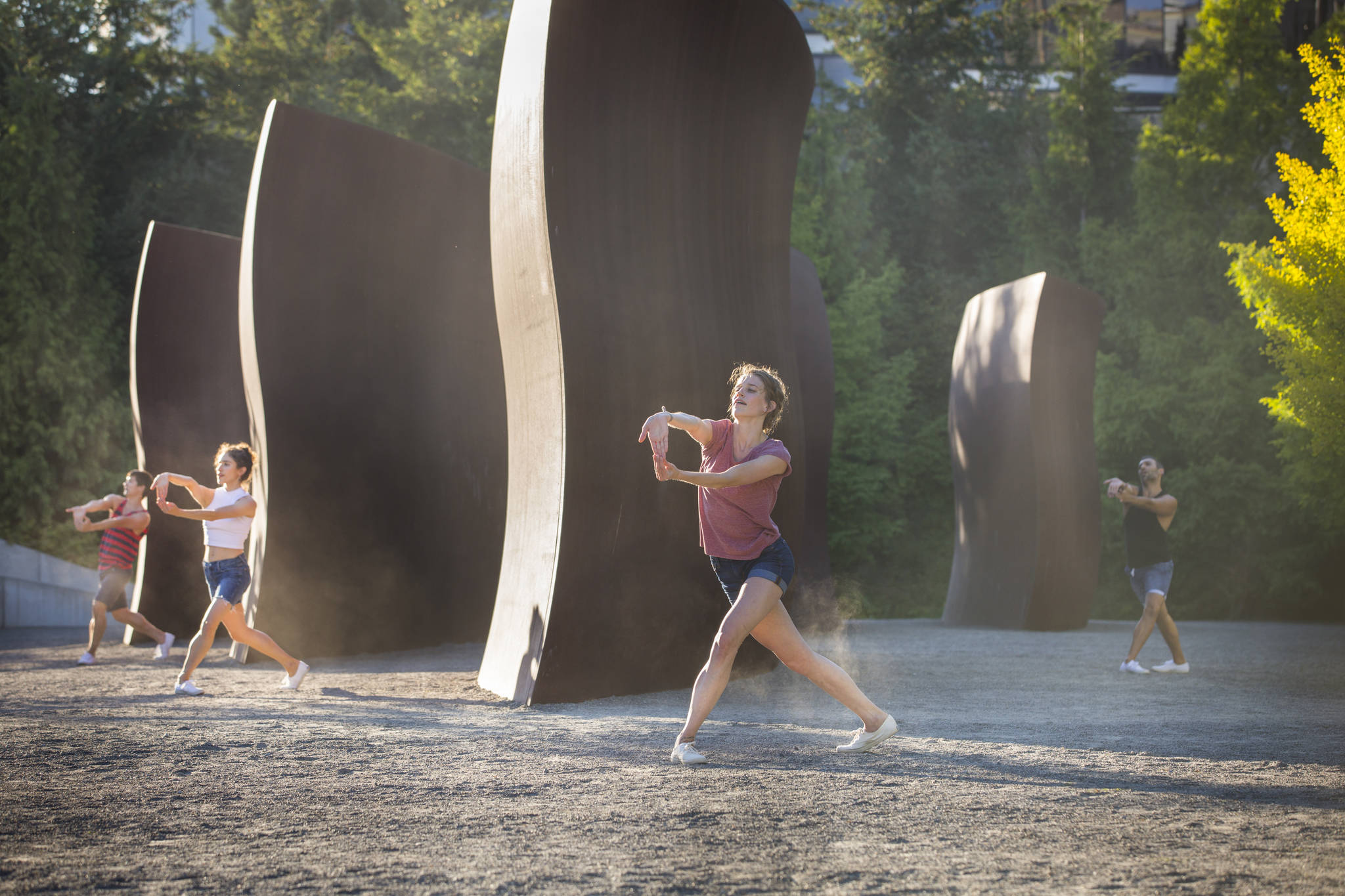You can hear them as they’re running across the performance space. But instead of the thump of bare feet on the floor or the staccato tap of pointe shoes, you hear the crunch of sneakers on gravel. Because this performance is taking place in the Olympic Sculpture Park, where the members of Au Collective are running past the weathered steel of Richard Serra’s Wake, sneakers take the place of other dance shoes. They’re rehearsing Eva Stone’s You Sleep Like You’ve Never Sinned, one of four works that have been made fresh for this unusual dance venue.
Pacific Northwest Ballet and the Seattle Art Museum put their heads together last year for the first version of “Sculptured Dance,” and the evening of works created specifically to be performed in SAM’s sculpture park was so phenomenally successful it would have been foolish not to do it again. With the Olympic Mountains as a spectacular backdrop and a set chosen from the works on view at the park, the choreographers have dealt themselves some powerful competition for audience attention; their varied responses come from a wide variety of styles.
The running in Stone’s work feels almost like a marathon, as the performers lap each other in the long, narrow space. In Picnic by PNB member Noelani Pantastico, the running matches the happy-go-lucky quality of the title. To a score by 1960s surf-guitar group the Routers, her cast plays games as they lope past Alexander Calder’s bright orange stabile, The Eagle. Picnic is Pantastico’s first choreography, and despite some qualms at “telling people what to do,” she’s made just what she was hoping to—“six minutes of fun.” Price Suddarth, another PNB dancer, has been developing his choreographic skills over the past several years, making several works for the company’s Next Step showcase as well as creating Signature for the company’s main stage in 2015. His Shifted Figures, to a score by William Lin-Yee (another PNB colleague), is designed for the space around Tony Smith’s Wandering Rocks.
When Dani Tirrell was scouting the park, trying to decide what sculpture to work with, he originally didn’t want to deal with Roxy Paine’s Split, but the implacable nature of her metal tree, almost barren on a steep slope, drew him in. While Suckle is dedicated to his mother, and especially his grandmother, the setting evokes harsh events as well as loving ones. For African Americans, trees not only bore fruit, but sometimes the bodies of dead comrades; this location is truly a mixed experience for Tirrell. He says that this homage to the strength and love of his ancestors is true to the spirit of his grandmother, who “loved her world unconditionally.”
“Sculptured Dance” is a significantly different look at what is more often a traditional theatrical event. With the audience close enough to see the dust that those sneakers kick up and hear the slap of hands as they clasp in a fast turn (not to mention the mountains in the background), we get a fresh sense of a vital art form. Olympic Sculpture Park, 2901 Western Ave., seattleartmuseum.org. Free with RSVP. 5 p.m. Thurs., Aug. 31.








